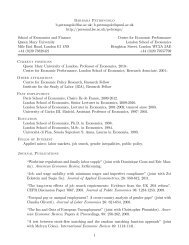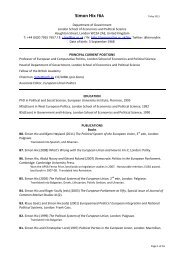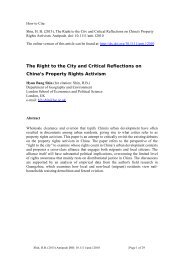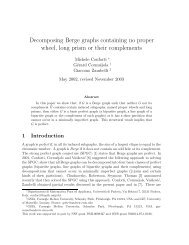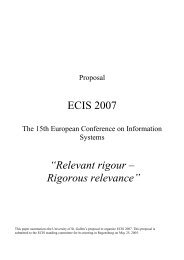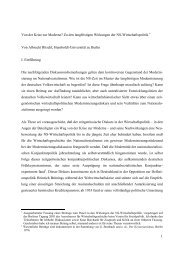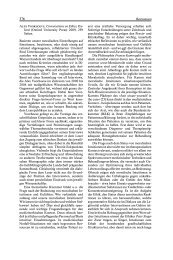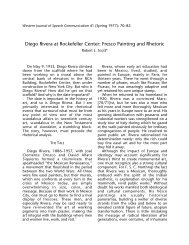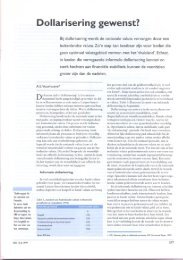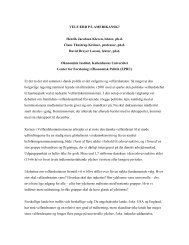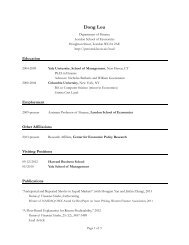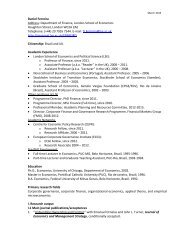Reference: MA, Debin. “The Great Silk Exchange: How the World ...
Reference: MA, Debin. “The Great Silk Exchange: How the World ...
Reference: MA, Debin. “The Great Silk Exchange: How the World ...
Create successful ePaper yourself
Turn your PDF publications into a flip-book with our unique Google optimized e-Paper software.
combined and doubled that of <strong>the</strong> Japanese silk industry. The US silk industry developed a<br />
reputation for large-scale, capital intensive production of standardized silk products (Ma<br />
1996).<br />
The spectacular growth of <strong>the</strong> American silk industry created an enormous demand<br />
for raw silk. Although imports of Chinese raw silk had begun as early as 1788 (Xu et al.<br />
1990: 50), substantial amounts of raw silk crossed <strong>the</strong> North Pacific from China and Japan<br />
to San Francisco in 1867 after <strong>the</strong> establishment of <strong>the</strong> regular shipping line between China<br />
and <strong>the</strong> U.S. The raw silk was routed through <strong>the</strong> Continent to <strong>the</strong> silk-manufacturing<br />
centers around New York city through <strong>the</strong> inter-continental railway system, completed in<br />
1869 (Ma 1996: 338). The highly mechanized, large scale nature of <strong>the</strong> U.S. silk<br />
manufacturing placed exacting demands on <strong>the</strong> quality of imported raw silk. Japan<br />
succeeded in this competition and took an increasingly larger share in <strong>the</strong> U.S. market. By<br />
<strong>the</strong> mid-1910s, Japan, overtaking China, became <strong>the</strong> world’s largest raw silk exporter. And<br />
by <strong>the</strong> 1920s and 30s, Japan supplied 75 to 90 percent of <strong>the</strong> total world raw silk exports<br />
(Ma 1996: 339). By <strong>the</strong>n, <strong>the</strong> bulk of <strong>the</strong> global silk trade was carried through <strong>the</strong> Pacific<br />
route.<br />
Ano<strong>the</strong>r distinguishing aspect of <strong>the</strong> modern silk road era was <strong>the</strong> massive reverse<br />
flow of technology from <strong>the</strong> West to <strong>the</strong> East, that is from Europe to Asia. The superior<br />
silk-reeling technology developed in sou<strong>the</strong>rn Europe in <strong>the</strong> eighteenth and nineteenth<br />
centuries went with <strong>the</strong> European merchants as <strong>the</strong> traders moved progressively eastward in<br />
<strong>the</strong>ir search for raw silk. The technology was brought to <strong>the</strong> Levant, Turkey, and India<br />
(Owen 1987; Quataert 1987; Bag 1989: Ch. IV). And most importantly, European<br />
20



